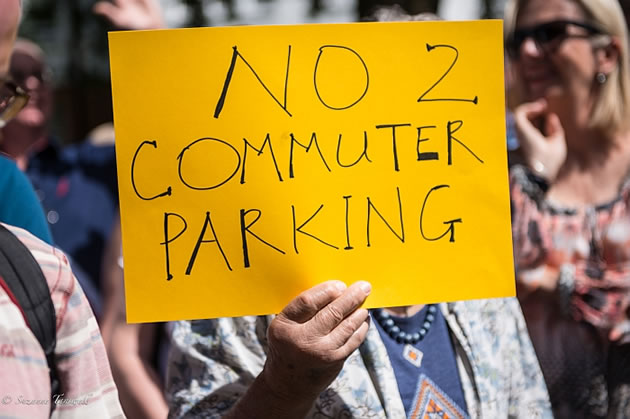Council Accused of Lying Over 'Slapdash' Approach to Shared Bay Policy
Zones selected on basis of officer convenience rather than available parking spaces

A local councillor has said Ealing Council appear to have lied after a Freedom on Information (FoI) request revealed how they formulated their controversial policy on shared bays in local controlled parking zones (CPZs).
The FoI request by Gary Malcolm, the Liberal Democrat Group Leader who represents Southfield ward showed that the Council had collected no numerical data on parking in the CPZs where they were planning to introduce mixed use bays. Despite this a report presented to the Council in favour of the scheme quotes occupancy rates for zones across the borough. In addition he learnt that the basis for choosing the zones where the policy was implemented was the convenience of officers carrying out the surveys.
Ealing Council denies that it has lied and has issued a statement which it says will clarify the misunderstanding (see below).
The Transport Strategy report that was presented to the Council on 5 June stated that 35% of streets in CPZs show an occupancy of over 75% and 10% are under 25% The report went onto say that ‘modest pressure' on parking in some zones meant that shared bays could be introduced without causing any parking problems for residents. It is now claimed that these figures were made up to justify a policy for which no rigorous research was done to determine the impact.
Cllr Malcom asked questions under the Freedom of Information Act about the methodology used by the Council to determine which zones where included in the plan. All the zones in Chiswick wards were among those where shared bays are to be brought in. Cllr Malcolm asked for the specific occupancy rates on a street by street basis in the wards he represents. In their reply the Council admitted that no numerical data had been collected on occupancy.
Ealing Council said in its Freedom of Information reply, “The council observed that within Controlled Parking Zones, many bays are often empty during the day. This is often because residents are using their vehicles for work. The council surveyed the area on a number of occasions and identified a number of parking bays that were under-utilised, which it felt could accommodate visitor parking during the day without impeding on the requirements of residents.”
In a further question he asked how it was determined that three out of the five zones where the policy was to be introduced were in the Chiswick area he was told that they ‘were primarily chosen on the basis of convenience for the officers undertaking the surveys'. This was because they either resided in the area or travelled through the zone on the way to work.
 Residents gather on Acton Green to protest against the plan
Residents gather on Acton Green to protest against the plan
Cllr Malcolm, said, "What this means: Ealing Council appears to have lied. It initially said it was a coincidence and then it has said that zones were chosen because staff live nearby! Another day, another story. Ealing Council are choosing locations not based upon hard facts. It is totally a slapdash approach and we reject these plans which will lead to huge numbers of commuter traffic in the area and greater levels of air pollution.”
According to the local Liberal Democrats up to 1,300 people have complained about the policy proposal by Ealing Council even though no formal consultation was carried out. The negative response to the scheme has been described as ‘unprecedented'. Critics say that it will encourage commuter and holiday parking in the area with a daily charge for the use of the shared bays of just £4.50 and that the Council are undermining their own objectives of reducing traffic and pollution in the borough simply to raise revenue.
Asked for a comment on behalf of Ealing Council, Councillor Mik Sabiers, cabinet member for environment and highways said:
“The council has not lied and I am happy to clarify any misunderstanding. There are around 40 zones to be surveyed within the next year. There is no specific order in which they need to be carried out and all will follow the same technical process. We have excellent quality data on parking permits, and have conducted a survey on the number of spaces in the first five zones so we had robust information on which to make this decision.
“As all existing zones are intended to form part of this programme and there is no defined order of delivery, officers opted to start the process in areas convenient to them as a good use of staff time. As the bays are surveyed at different points in the day, it was more efficient to start surveying in an area that our staff happened to live in or commute through. This is the coincidence to which they referred.
“97% of places where permit holders are permitted to park are for permit holders only. Our data suggests that a high number of these spaces are not at all heavily used and therefore some of them could be suitable for use by visitors too.. We will, of course, keep this policy and the cost of dual use bays under review, and we will amend shared use spaces in the light of experience on the ground.”
There are approximately 52,000 parking spaces in the borough of which 97% are for permit holders only. 86% of the 31,500 permits in the borough are issued due to a residential qualification. The Council’s Transport Strategy states that with the number of permits amounting to 60% of the parking spaces in the borough a rebalancing is necessary.
June 18 2018 (updated)